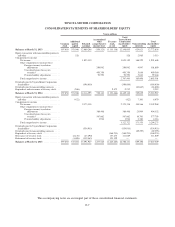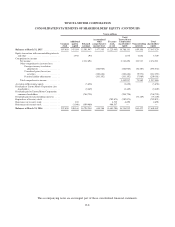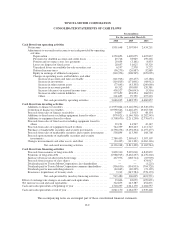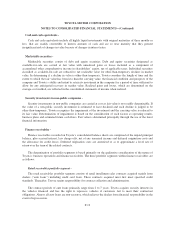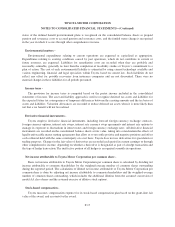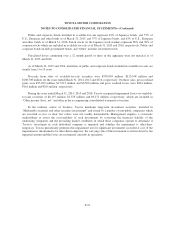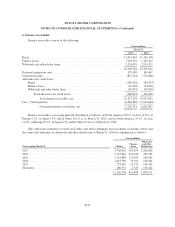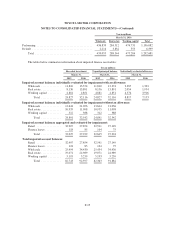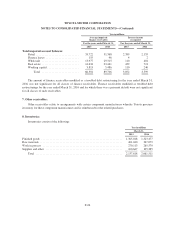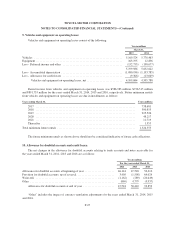Toyota 2015 Annual Report Download - page 158
Download and view the complete annual report
Please find page 158 of the 2015 Toyota annual report below. You can navigate through the pages in the report by either clicking on the pages listed below, or by using the keyword search tool below to find specific information within the annual report.TOYOTA MOTOR CORPORATION
NOTES TO CONSOLIDATED FINANCIAL STATEMENTS—(Continued)
status of the defined benefit postretirement plans is recognized on the consolidated balance sheets as prepaid
pension and severance costs or accrued pension and severance costs, and the funded status change is recognized
in the year in which it occurs through other comprehensive income.
Environmental matters -
Environmental expenditures relating to current operations are expensed or capitalized as appropriate.
Expenditures relating to existing conditions caused by past operations, which do not contribute to current or
future revenues, are expensed. Liabilities for remediation costs are recorded when they are probable and
reasonably estimable, generally no later than the completion of feasibility studies or Toyota’s commitment to a
plan of action. The cost of each environmental liability is estimated by using current technology available and
various engineering, financial and legal specialists within Toyota based on current law. Such liabilities do not
reflect any offset for possible recoveries from insurance companies and are not discounted. There were no
material changes in these liabilities for all periods presented.
Income taxes -
The provision for income taxes is computed based on the pretax income included in the consolidated
statements of income. The asset and liability approach is used to recognize deferred tax assets and liabilities for
the expected future tax consequences of temporary differences between the carrying amounts and the tax bases of
assets and liabilities. Valuation allowances are recorded to reduce deferred tax assets when it is more likely than
not that a tax benefit will not be realized.
Derivative financial instruments -
Toyota employs derivative financial instruments, including forward foreign currency exchange contracts,
foreign currency options, interest rate swaps, interest rate currency swap agreements and interest rate options to
manage its exposure to fluctuations in interest rates and foreign currency exchange rates. All derivative financial
instruments are recorded on the consolidated balance sheets at fair value, taking into consideration the effects of
legally enforceable master netting agreements that allow us to net settle positive and negative positions and offset
cash collateral held with the same counterparty on a net basis. Toyota does not use derivatives for speculation or
trading purposes. Changes in the fair value of derivatives are recorded each period in current earnings or through
other comprehensive income, depending on whether a derivative is designated as part of a hedge transaction and
the type of hedge transaction. The ineffective portion of all hedges is recognized currently in operations.
Net income attributable to Toyota Motor Corporation per common share -
Basic net income attributable to Toyota Motor Corporation per common share is calculated by dividing net
income attributable to common shareholders by the weighted-average number of common shares outstanding
during the reported period. The calculation of diluted net income attributable to Toyota Motor Corporation per
common share is done by adjusting net income attributable to common shareholders and the weighted-average
number of common shares outstanding, which includes the additional dilution from the assumed conversion of
model AA class shares and the assumed exercise of dilutive stock options.
Stock-based compensation -
Toyota measures compensation expense for its stock-based compensation plan based on the grant-date fair
value of the award, and accounts for the award.
F-17


